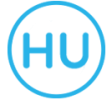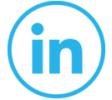Marsha from Canada shares her experience of LDN for Multiple Sclerosis (MS) (LDN, low dose naltrexone) from LDN Research Trust on Vimeo.
Linda Elsegood: I'd like to introduce Marsha from Canada who takes MTM forms. Thanks for joining me, Marcia.
Marsha: You're welcome.
Linda Elsegood: how old, were you when you started noticing that there was something wrong with you?
Marsha: Um, I think now that I know the symptoms of ms, um, my first episode was when I was 10. And, um, I haven't like an electric shock that went through my body, um, kind of paralyzing me, um, and that lasted for about a day.
Um, and then I didn't have another, um, inclination until I was in high school, probably 17. Um, I wasn't a dance troupe, and I always had trouble with my legs. Um, and. My coaches and stuff would just say that it was a shin splint and just from dancing and stuff. Um, and then as I got a little bit older, um, probably 24, um, I started noticing that my legs were going numb and, um, it would come and it would go, it would come and go.
And then my next episodes were probably not till I was about 30, 31. Um, and then after I had my son, um, I noticed my symptoms got worse, which I didn't know what they were. diagnosed in 1995. Um, but I've had, like I said, since I was 10, so for about 43 years,
Linda Elsegood: It's a long time. Isn't it? I wonder back then, or are you happy having not known?
Marsha: Um, yeah, it's probably better that I didn't know. I bet a young age, but yeah.
Linda Elsegood: when you first started, did you have any problems with sleep or any other side effects?
Marsha: Um, I think like the first week, um, I noticed a difference in my energy and I was sleeping.
Okay. And then, um, it's, um, it's like all my symptoms, um, kind of got worse for a little while. I would say for about maybe five or six weeks. I was just trying to, um, I guess maybe get it in my system. And, um, then after that, uh, I was, uh, going up, you know, increasing my dosage and, um, yeah, so I did that pretty slow over several months increasing my dosage.
And so now I'm on 4.5, and I've been on it for one year.
Linda Elsegood: So can we just go back and could you tell us what a day was like for you before you started LDN? What symptoms you had and how that affected your life?
Marsha: Um, well, I think mainly fatigue was the biggest battle that I had to overcome. And, um, Now I usually wake up, and I'm ready to go.
Um, sometimes I would stay in bed most of the day. Um, and I still do have the occasional days, um, because when I feel better, I usually do too much. So it's finding that balance. Um, but yeah, I, I, I have more energy now and, um, My moods are better.
Linda Elsegood: other than your mood and the fatigue, what other symptoms did you have this whole starting at the end?
Marsha: Um, I have bladder issues from my ms. And it seems to be better. Now I've also lost weight, which is an added benefit, um, that I didn't really know about, but
Linda Elsegood: well, that always has to be good. Doesn't it?
Marsha: Yeah. Oh yeah. That's a benefit.
Linda Elsegood: So how did you hear about LDN?
Marsha: You know, I think it was on.
Um, an ms. Site. Uh, somebody mentioned it and, um, it just kind of took off like wildfire. And so I, I began searching it out, and I hear good things about it. So I asked my neurologist about it, and she was not keen on it. Um, she told me to go to my regular doctor and so that's what I did. And he said that it would not interfere with any of my other medications so that it was worth a try.
And so that's what I did. And I've been on it for one year.
Linda Elsegood: What would you say to other people that are contemplating trying LDN, but maybe a bit wary?
Marsha: I would say give it a try. I would say stick with it. Um, I think it probably has to get into your system. Um, and everybody's dosage, I think, from what I've gathered is different.
So I think it's just finding what works best for you and, and, um, it's worth a try.
Linda Elsegood: Would you like to tell us what you've been able to do since being on LDN?
Marsha: Yes. Just, um, as a matter of fact, last weekend, I was able to go zip lining, which I think LDN has given me more strength in my limbs and things. And, um, it was a great time and yeah.
Linda Elsegood: That sounds like fun. If you don't mind Heights and going fast,
Marsha: it was on my bucket list. So I only live once, so I thought I better do it when I
Linda Elsegood: wonderful.
Marsha: It was fun.
Linda Elsegood: I'm so pleased that you found LDN and it's worked so well for you and a long way it continues.
Any questions or comments you may have, please Contact Us. I look forward to hearing from you. Thank you for joining us today. We really appreciated your company. Until next time, stay safe and keep well.







